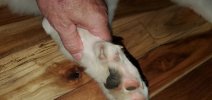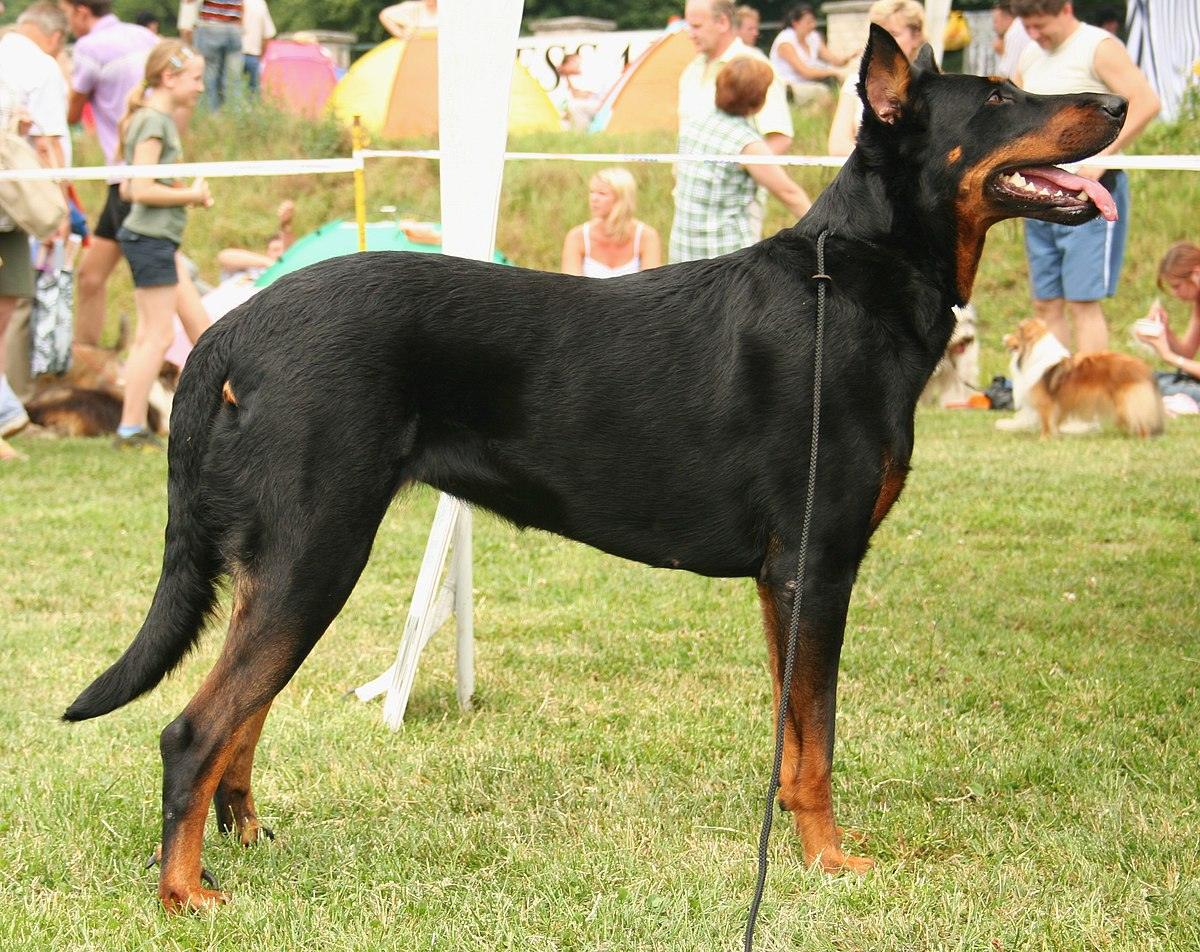Some Manx Cats as well as other cats have Polydactyl front paws. They can have 5-6 front claws and 4 claws on back feet. So they can have up to 20 toes/claws. Great Pyrenees and several other breeds can have 5 toes on each front foot and 6 toes on each back foot giving them 22 total.
I had a Manx cat when I was younger and he used to sleep on branches in a big oak tree that was above my truck. Huge front feet and Bob tail.
The Great Pyrenees is most immediately from the Pyrenees Mountains, which span Spain and France. The dog did well in those mountains working primarily as a defender of flocks from predators like wolves and bears. However, people can trace the Great Pyrenees's lineage farther back than that, all the way to Asia between 10 and 11,000 years ago. They are estimated to have arrived in Europe only 5,000 years ago.
Once in Europe, the Great Pyrenees was considered mainly a peasant's dog. By virtue of its task guarding flocks, the breed was associated specifically with shepherds. People marveled at the job the Great Pyrenees did in protecting the flock, and the extreme loyalty displayed to the shepherd and his family as well.
Eventually the Pyr did gain some higher status in France as it was adopted as a royal dog into the court of Louis the XIV. Whether regal or commonplace, the Great Pyrenees was always beloved in Europe.
The breed made voyages into Newfoundland in the mid-1600s, where it clearly was able to deal with the harsh winters Canada has to offer. At this point in their history, natural predators became more and more scarce as they were hunted and their habitats were destroyed. This left less work for the Great Pyrenees to do, and as a result their numbers dwindled. They were also bred with other breeds which diluted the pureness of the gene pool.
A long way from their origin, the Great Pyrenees arrives at 1907, where the French created kennel clubs that specifically sought out pure Great Pyrenees to breed the dog and perpetuate its existence. The American counterpart arrived in 1931.
The variety of dog breeds can be quite astounding. Nearly every shape, size, personality, and job that a dog could do is represented by one or more existing breeds. After examining the long and twisty road that is a specific breed's history, I think this variety is even more breathtaking. To punctuate the point, scientists believe that every modern dog evolved from a common wolf ancestor only 15,000 years ago. Simply moving around the globe, nipping at our heels, wolves have become as funny as Pugs, small as Terriers, or large, white, and lovable as a Great Pyrenees.
9 Things You Didn't Know About the Great Pyrenees
The
Great Pyrenees is a
big dog with an equally big heart. Pyrs have been serving as guardians for their flocks for thousands of years. Here are some interesting facts about the Great Pyrenees:
1. They Were Bred to Be Guard Dogs
The Great Pyrenees was bred to be a
livestock guard dog for the farmers in the Pyrenees Mountains of Europe which form the border between France and Spain. These farmers bred the Great Pyrenees and the smaller
Pyrenean Shepherds; the latter was in charge of herding, while the former was in charge of protecting the flock from predators like wolves and bears.
2. The Breed Is So Old, They've Been Fossilized
The Great Pyrenees likely arrived in the Pyrenean Mountains with their shepherds around the year
3,000 B.C.
Fossils of the Great Pyrenees have been found in the region and dated to between 1800 B.C. and 1000 B.C. Experts think the breed probably evolved from white mountain dogs that originated in Asia Minor as many as 11,000 years ago.
3. They Are Instinctively Nurturing
The Great Pyrenees is not just a guard dog. He is a
guardian. The Great Pyrenees protects the members of the flock, and he also cares for and
nurtures them. His instinct is to be kind to and patient with all vulnerable animals.
4. They Are Nocturnal by Nature
The Great Pyrenees was bred to guard the flocks at night while the shepherds were sleeping and predators roamed about. Because of this, he is naturally
nocturnal. People who keep Pyrs as pets shouldn't be surprised to find they often bark at night. This makes them a great deterrent for burglars.
5. They Became Royalty in France
For thousands of years, the Great Pyrenees was the dog of peasant livestock farmers. But he gained popularity with the French royals and nobility in the Renaissance years. According to French
writings from 1407, the "Great Dogs of the Mountains" served as guardians for the Chateau fort de Lordes, a castle in southwestern France. In 1675, King Louis XIV's royal court declared the Great Pyrenees the Royal Dog of France.
6. Queen Victoria Owned One
Pyrs were not just coveted by the French nobility. Queen Victoria of England
owned one in the mid-19th century. Queen Victoria was a
dog lover and owned many different breeds throughout her life.
7. The Marquis de Lafayette Brought Them to the United States
The Marquis de Lafayette, a French military officer who fought in the American Revolutionary War and was close with George Washington, brought the
first Great Pyrenees to the United States in 1824. Lafayette gave a pair of Pyrs to his friend, J.S. Skinner, who later wrote a book called "The Dog and the Sportsman."
8. They Helped Revive the St. Bernard
In 1870, Pyrenean blood was used with that of other large breeds to help bring back the St. Bernard after that noble dog's numbers had been so greatly depleted by avalanches and distemper at the hospice in Switzerland.
9. They Were Used to Haul Artillery in WWII
Standing guard isn't the only job that this breed has had. During World War II, the Great Pyrenees was used to bring
supplies of artillery over the Pyrenees Mountains in between Spain and France.
The other common polydactyl dog breed is the Great Pyrenees. Almost all dogs in this breed are born with a dewclaw (meaning an extra toe on the limb).
As a livestock herder, the toes come in handy when gripping and balancing rugged terrain.
However, polydactyl is now a breed standard for this breed. The Great Pyrenees is not allowed to participate in dog sports if he doesn't have six toes on his hind legs.
Cassie can actually climb up the cat tree to get Griffin our cat while they play. We also have a Bernese Mountain Dog-Samson he is 150 lbs. Cassie was 50 lbs at 5 months. She will probably top out at 120 lbs.
We will be looking to trade some ammo or bullets so we can get Captdru a prize for the correct answer.
Thanks
Len & Jill






